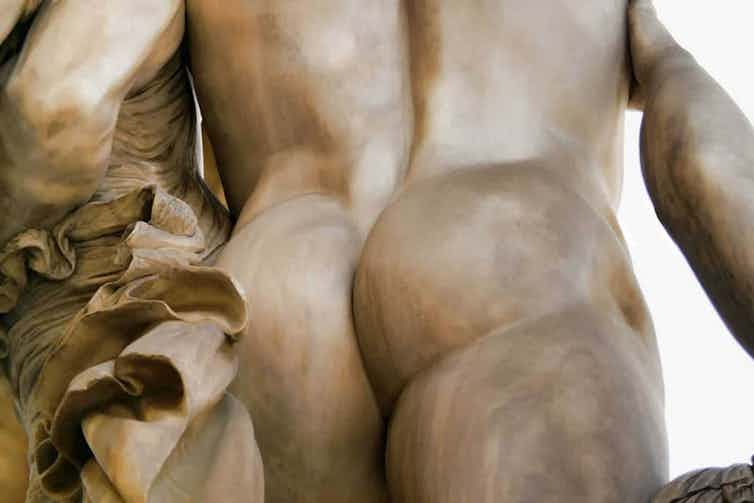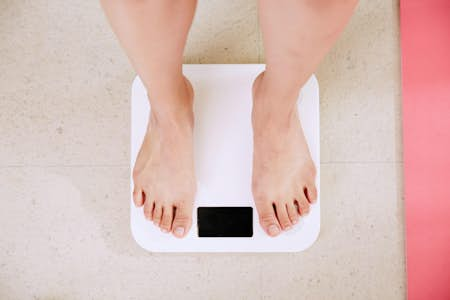The inevitable effects of age will cause your gluteal muscles to atrophy, and the fat cells in your bottom to shrink. Your skin will lose its elasticity, and your cellulite will become more visible. What are you left with? A pasty, white, saggy bottom! A droopy bottom. However people want to ridicule it, it doesn’t make us feel good about ourselves.
The good news is that providing you put the work in, a saggy bottom is reversible - you can build it up, bring back some shape to it, and get that peach-perfect booty that makes you feel sexier and more confident.
Ready to transform your life? Whether you're looking for a new pair of running shoes or some shiny home gym equipment, you can find everything you need to fuel your fitness journey with our partner brands.
Your glutes are one of the strongest muscles in your body and are a calorie-burning powerhouse. When they lose their mass or stop working as well, you burn fewer calories, causing fat to build up where you don’t want it to. Because of the resultant muscular imbalances in your spine and core muscles, people often get posture-related problems.
So we can see that a poor-working rear end is not only undesirable, but it contributes to poor health. By following the routine below, you will build up your gluteal muscles, make them stronger and burn more calories at rest.
10-minute firm butt workout routine
The exercises below will help to build muscle and strength in your gluteal muscles. Each week you should try to do more reps or an extra set; remember to warm up before starting.
After you’ve done the bodyweight exercises for a month, you could start using some light weights with the squats and deadlifts. Regularly increasing the weight will continue to build your buttocks, but do not go too heavy.
For the first couple of weeks, do 2 sets of each exercise, and then gradually add more sets and repetitions to your routine.
Squats
Squats are renowned for being one of the best butt-building exercises. They also work your thighs and improve your core strength.
Standing with your feet about shoulder-width apart:
- Bend at your hips slightly, lean forward a little, and bend your legs to lower yourself down.
- You can put your arms out in front of you to support yourself.
- When bending your legs, do not let them go over your toes.
- Bend down until your legs are about parallel with the floor.
- To come back up, push your heels into the floor and squeeze your glutes.
- That’s one repetition (rep).
- Do 12 reps per set.
Lying glute bridges
Regularly doing glute bridges will strengthen your gluteal muscles, which may have become particularly weak if you’ve spent your working life sitting at a desk.
- Lying on your back, bend your knees and push your heels into the floor to lift your buttocks and hips.
- Form a straight line with your knees, hips and shoulders.
- Squeeze your glutes hard while pushing your heels into the floor.
- Draw your abs in to help prevent your back from overextending.
- Hold the above position for a few seconds.
- Gently lower your hips back down to the floor.
- That’s one rep. Try to do 10 reps per set.
Lunges
- Stand with your feet shoulder-width apart, take a big step forward with one leg, and bend it at the knee.
- Bend your front leg until it’s about parallel with the floor. Bend your other leg slightly, too. Try to shift your weight forward a bit on the way down.
- Push the heel of your front foot into the floor and go back to step 1.
- Change legs and repeat. 10 reps on each leg counts as one set.
One-legged deadlifts
These will be helpful if your glute muscles have ‘switched-off’, where they may have stopped working completely; this is quite common in people who have posture-related problems and muscular imbalances in their spine.
- Start with your feet hip-width apart.
- While leaning forward slightly with your hips, put your weight onto one leg and allow your other leg to extend behind you.
- Lift your extended leg behind you, and then pull your hips forward with the leg bearing your weight. You should feel the exercise working your glute.
- Return to the starting position and repeat.
- Do 10 reps on each leg per set.
Side-lying leg raises
Side-lying leg raises will work the sides of your butt, and your lower back.
- Lie on your right-hand side with your right knee bent at 90 degrees.
- Straighten your left leg, so it’s in line with your back.
- Put your left hand and fingers into the top of your buttock, and tilt your left hip forward slightly.
- Slowly raise your left leg up and as far as you can. Don’t let your hips tilt back.
- Gradually lower your leg to the starting position.
- Remember to keep your leg in line with your back, and try to keep your abs firm.
- Do 12 reps on each leg per set.
Fight gravity, and lift that butt
If you stick to the above workout routine, you should start to see some results after the first month. Your derriere will be firmer, a bit more shapely, and you should feel more confident about it. What should you do after a month? Keep up with the workout, and increase the difficulty level by adding more reps and sets. You could also start using some light weights, and build up the weight slowly to keep building and shaping your bum.









